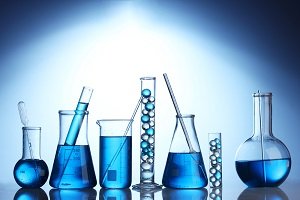A lab report is a brief description and a summary of a chemical experiment written for the purpose of describing the way it was conducted and its outcome. A sample chemistry lab report is an example of how to write an appropriately formatted, informative, and comprehensible lab report, which would enable people to use the results of a current experiment in their future science activity. A sample chemistry lab report will help to understand a typical structure of this document and basic requirements for it.

Title: Bases and Acids.
Date: Jan 17th, 2017.
Purpose: To determine which products in a typical household contain acids or bases.
Apparatus:
- Eight glass vials, bowl, colanders, eye-dropper, water, eleven leaves of a red cabbage;
- Vinegar, lemon juice, washing powder, baking soda, milk, white wine, liquid drain cleaner, shampoo.
Procedure:
- Eleven red cabbage leaves were chopped and put into a bowl filled with 500 ml of boiling water.
- In thirty minutes, when water changed its color into purplish and was cooled, with a help of colanders the cabbage juice was separated from leaves.
- Eight separate vials were filled with vinegar, lemon juice, washing powder, baking soda, milk, white wine, liquid drain cleaner, and shampoo.
- With a help of an eye-dropper, a small quantity of the cabbage juice was added into each of the vials.
Time: 35 minutes.
Data: Vinegar in the vial number 1, lemon juice in the vial number 2, soda in the fourth one, white wine in the sixth one changed their color into light pink. It indicated that those products were examples of acids. Washing powder in the third jar, milk in the vial number five, drain cleaner in the seventh one, and shampoo in the eighth turned green; therefore, those are bases.
Results: Acids and bases are opposite chemical classes, which neutralize each other. Most acids are quite corrosive so they are able to dissolve some metals. Bases can produce a reaction with acids, which results in salt and water. A generally accepted method of identifying a chemical nature of a liquid is a litmus test, and if a paper turns red or blue, the chemical is acid or base respectively.
However, an experiment with cabbage juice is productive as well as a litmus one since this juice is an efficient, simple, and affordable acid-base indicator, and when it is mixed with a certain chemical, the substance changes its color into either pink or green. In the first case, it indicates an acid, while in the second case, it determines a base. Furthermore, it is safe and inexpensive; therefore, it can be used in amateur chemical experiments at home, in a learning process in schools or colleges, or in science activities.
This experiment can be used in order to prove that there are lots of examples of bases and acids in a household. Most cleaning substances and a few food products, in particular, dairy are bases by their chemical nature. The vast majority of beverages, fruits, vegetables, and medicines are acids. As a rule, bases are soapy and slippery while acids are corrosive, bitter or sour, and quite frequently with an acidic smell.